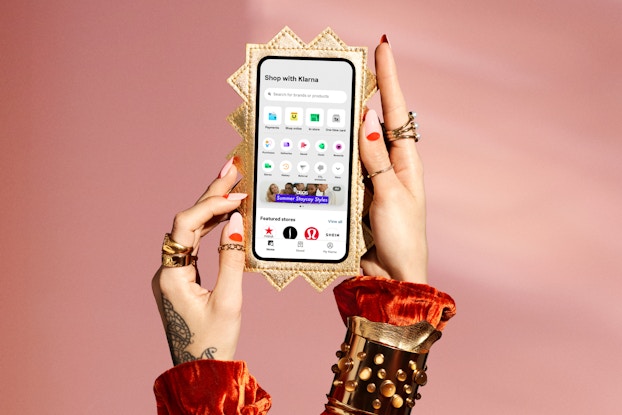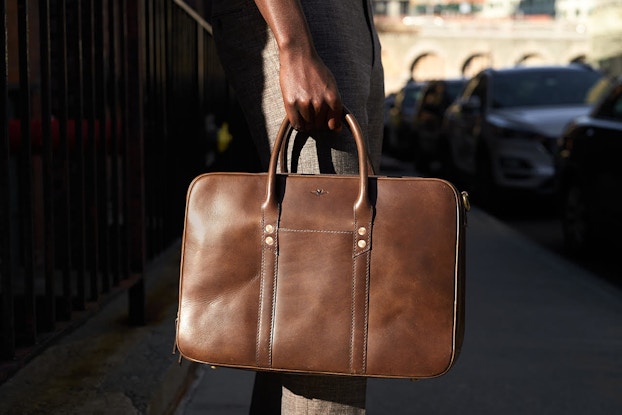
Why it matters:
- Buy now, pay later options have become an increasingly valuable way for retailers large and small to attract younger shoppers and boost sales.
- Sixteen percent of millennials, the nation’s largest buying group, have used BNPL at least once in the past year, compared to only 5% of baby boomers.
- BNPL platform Klarna is now positioning itself as a new way for small businesses to reach customers with targeted ads and promotions.
Klarna, the payments platform that lets consumers buy now and pay later, saw the sales of its largest e-commerce partners soar during the pandemic, while small retailers struggled.
As a result, Klarna decided to focus on being a better partner to small and medium-sized brands.

Interested in a small business membership?
Find out how the U.S. Chamber of Commerce can help your company grow and thrive in today's rapidly-evolving business environment. Connect with our team to learn how a small business membership can benefit your bottom line and help you achieve your goals.
In July it launched an initiative that gave 100 SMB retailers in the U.S. free payment processing for a year, as well as marketing support.
Klarna is also positioning itself as an advertising alternative to Google AdWords, or Facebook and Instagram for small retailers.
The pandemic, and the accompanying surge in online shopping boosted sales for large digitally native brands, and Klarna benefited from those sales as well.
“We wanted to give back and support the businesses that were negatively impacted by COVID, and work with a really important constituency of ours – small businesses,” David Sykes, head of North America for Klarna, told CO—.
“When people think of Klarna, they always think Nike and Macy’s and Sephora – the big retail partnerships we have,” Sykes said. But in the U.S., of the 10,000 retail partners using Klarna, 80% are small and medium-sized brands. “In many ways, they are the core of the business,” he said.
Klarna’s goal, with its small business initiative, Sykes said, is to take the success it has had with large retailers “and replicate that for smaller brands.”
Buy now, pay later tech: layaway for the digital age
Klarna was founded in Sweden in 2005. It is one of a growing number of digital wallets that let online shoppers divide purchase costs into smaller payments, without being charged interest for the delayed payments. Retailers pay a fee per transaction when Klarna is used, and they’re willing to pay it because consumers tend to spend more when they have the pay later option.
Buy now, pay later companies like Klarna, Afterpay and Affirm are taking on the credit card giants by giving shoppers a no-cost way to stagger payments.
Users also have the option to pay in full immediately, and fans of the Klarna app say it helps them keep track of their spending and stick to a budget.
Buy now, pay later, or BNPL, has become increasingly popular with millennial and Gen Z shoppers.
Sixteen percent of millennials have used BNPL at least once in the past year, compared to only 5% of baby boomers, according to payments industry research company PYMNTS.com.
Klarna has doubled its U.S. customers over the past year to 20 million, and counts 90 million customers globally.
[Fintech Startups Update the Layaway Concept With Buy-Now-Pay-Later Payment Options]

Leveling the marketing playing field with big brands via personalized messaging
Klarna’s small business initiative, in addition to giving retailers a free year of Klarna, is helping to showcase how the platform can also serve as a marketing tool for small companies.
“The reality is if you’re a small business that is selling online, it is tough to get customers to your site,” Sykes said.
During peak times like Black Friday or Cyber Monday, demand for Google AdWords and Facebook and Instagram ads drives up prices to where those channels are out of reach for small businesses, he said.
Klarna, Sykes said, can use the information they have about past purchases and shopping wish lists, to provide targeted ad messages for retailers.
“We’re able to make sure that the deals, the discounts, the new products they see are extremely personalized,” Sykes said. “Because of that personalization we see a very high return on ad spend.”

Payment features geared for small businesses
In addition to staggered payments, Klarna gives retail clients these features:
- Charge on shipment: Customers who pay with Klarna aren’t billed until the item is shipped, because Klarna is able to plug into the warehouse’s order fulfillment software.
- Instant refunds: Customers get an instant refund when they alert Klarna that they have returned a product.
- In-store purchases: While most Klarna transactions occur online, retailers like Macy’s, Sephora and Foot Locker have begun accepting Klarna payments in their stores, and Klarna is planning to expand that to more stores.
Daniel Ralsky, a founder of Brooklyn, New York-based Satchel & Page, which makes high-end, heirloom quality leather bags and accessories, said Klarna’s charge-on-shipment feature has been especially valuable as high customer demand and lean inventories caused delays.
This feature was a key reason why Satchel & Page switched to Klarna from another BNPL platform, Ralsky said, and is an advantage over regular credit cards, which must be billed within seven days.
The company began using Klarna about 18 months ago and has seen the percentage of Klarna transactions increase to roughly 20% of their customers, Ralsky said. “It’s opened up our business to a younger customer that we probably wouldn’t have access to had we not been offering it,” he said.

The staggered payment strategy: ‘Our average order value is anywhere from 13% to 15% higher’
Erin Houston, a co-founder of Wearwell, a Philadelphia-based online membership service for sustainable clothing, said Klarna has helped Wearwell attract new customers by making it possible for them to afford made-to-last clothing that costs more than disposable fast fashion.
“Klarna allows our customer base to invest in pieces over time, and makes it more palatable for them to do so,” Houston said.
Klarna users also tend to spend more per order, she said. “Our average order value is anywhere from 13% to 15% higher when they are using Klarna,” she said.
Maya and Mica Caine, founders of Mive, a Columbus, Ohio-based slow-fashion, sustainable marketplace that pairs shoppers with designers who produce made-to-measure fashions, has also seen Klarna attract new customers who might have balked at the higher cost for made-to-measure garments. “Because we’re able to break it down into four payments, they’re able to invest in premium, slow-fashion garments but also not break the bank,” Maya Caine told CO—.
Some of the largest U.S. retailers have also cited Klarna for driving customer acquisition and sales.
Macy’s CEO Jeff Gennette, during his company’s first quarter earnings call this year, said Klarna users spend more per visit, and that offering BPNL has attracted younger shoppers, with 45% of those who use Klarna to buy from Macy’s being under 40, and many of those being first-time Macy’s shoppers.
Klarna’s goal, with its small business initiative, Sykes said, is to take the success it has had with large retailers “and replicate that for smaller brands.”
CO— aims to bring you inspiration from leading respected experts. However, before making any business decision, you should consult a professional who can advise you based on your individual situation.
Follow us on Instagram for more expert tips & business owners’ stories.
CO—is committed to helping you start, run and grow your small business. Learn more about the benefits of small business membership in the U.S. Chamber of Commerce, here.







